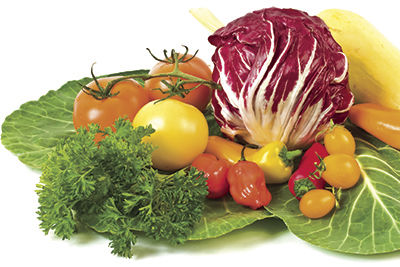Walking into your kitchen is the equivalent of an adult wonderland. The alabaster Carrara marble countertops glisten like newly fallen snow; the gleaming, silvery set of All-Clad cookware hangs down from ceiling racks; the elegant Viking range takes center stage, waiting for the proud moment when you pull your culinary masterpiece from its hot belly to tantalize your guests' taste buds. There's just one problem: you can't decipher a sweat from a sauté. And what exactly does "temper" have to do with your chocolate? Let's explore a few of these potential kitchen land mines.
A technique that is becoming increasingly popular is a process called sous-vide. Leave it to the French to create a divine-sounding name for a mere water bath! The exact translation in French stands for "under vacuum." It is a technique whereby food is sealed in airtight plastic bags and then submerged in a water bath or in a temperature-controlled steam environment for hours. This process is primarily utilized in order to ensure the inside of the food being prepared retains the proper level of moisture, without being overcooked on the outside.
Despite their similarities, sweat and sauté are two distinctly different techniques. In French, the word sauté means "to jump." Oftentimes a simple dish like quick stir-fry can be completed by sautéing your vegetables or meats. When you sauté, you are cooking these items at a medium-high to high temperature for a short period of time.While a sweat is similar to a sauté and vegetables may be cut up into smaller pieces, the sweating process is typically a step that is done in order to build flavors as you prepare these items to be added to another dish. A recipe will typically note to sweat onions until they are translucent, or carrots are cooked through.
When making baked items that you may drizzle with chocolate or if you are dipping fruits, you will need to temper your chocolate. The temper process heats and cools chocolate to form stable crystals, ensuring the chocolate will be firm at room temperature and adhere to your finished product. You also need to temper egg yolks to prevent curdling when adding them to hot sauces.
When preparing a dish, you not only want it to taste delicious, but to look fantastic, too! Unfortunately, there are those occasions where you may be served some green beans that are as grey as a gym sock and taste just as horrid. There is a process to maintain those fresh, crisp green beans and the vibrant color they were meant to be. This technique is usually used when preparing vegetables, and there are two parts to this process: blanching and shocking. The vegetables are cooked in boiling, salted water, which is blanching. The vegetables are then transferred to an ice water bath to stop the cooking process where they are shocked! The blanching cooks the vegetables al dente, and the shocking helps them retain their vibrant color. Voilà, no more sad veggies.
Whether your culinary creations are for special occasions or simply a picnic in the park, some of these techniques can help you masterfully prepare dishes that will not only be a feast for your taste buds, but will also provide visually stunning presentations that will impress and mesmerize your guests. Bon appétit!



(0) comments
We welcome your comments
Log In
Post a comment as Guest
Keep it Clean. Please avoid obscene, vulgar, lewd, racist or sexually-oriented language.
PLEASE TURN OFF YOUR CAPS LOCK.
Don't Threaten. Threats of harming another person will not be tolerated.
Be Truthful. Don't knowingly lie about anyone or anything.
Be Nice. No racism, sexism or any sort of -ism that is degrading to another person.
Be Proactive. Use the 'Report' link on each comment to let us know of abusive posts.
Share with Us. We'd love to hear eyewitness accounts, the history behind an article.